
| Perfect Plants |

|
|
Very nice Salvia divinorum plants. |
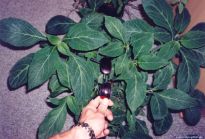
|
Super-Salvia #1 - Image 3 Same plant to a later time at another place compared in size with sunglasses. |
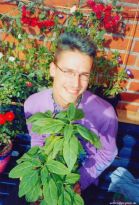
|
Super-Salvia #2 - Image 2 Here the same plant like on the image before, but this time together with myself, being happy about her growing style. |
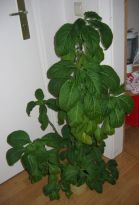
|
Super-Salvia by Markus - Image 1 Here a real monster from a grower named Markus. He also sells his plants across europe. Have a look at his Salvia-Plants Page |
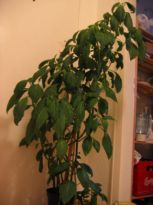
|
Super-Salvia by Markus - Image 2 Here the same plant later. She continued to grow. Now it looks like a small tree :) |
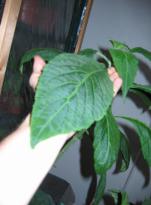
|
Super-Salvia by Markus - Image 3 Monster leaf. |
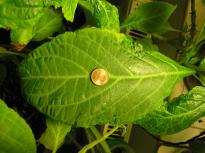
|
Fat Leaf Salvia divinorum leaf and 1 Eurocent. |
| Outdoor Plants |

|
|
Salvia divinorum plants that has been grown outside in middle germany. Also the Super-Salvia #2, that is not shown here, was an outdoor plant. |
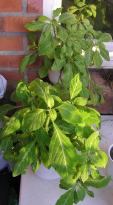
|
Outdoor Salvia 2 Two plants standing on a north-west balcony during summer. |
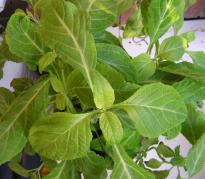
|
Outdoor Salvia 3 Plant standing on a north-west balcony during summer. |
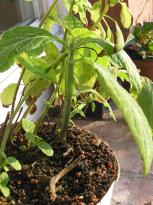
|
Out of nowhere Out of nowhere came the plant with the fat stem. Pot was standing outside during spring and summer. |
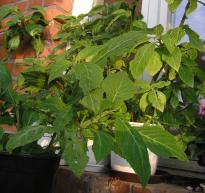
|
Balcony 1 Some plants on a north-west balcony. |
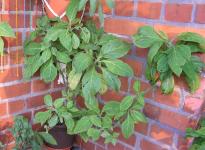
|
Balcony 2 A plant on a north-west balcony. |
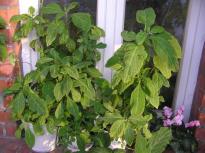
|
Balcony 3 Some plants on a north-west balcony. |
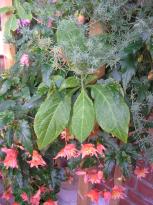
|
Balcony 4 Who is looking there? |
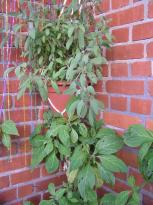
|
Balcony 5 Cooking sage above - Salvia divinorum below |
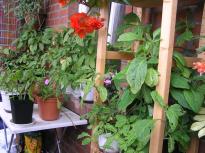
|
Balcony 6 Some plants on a north-west balcony. |
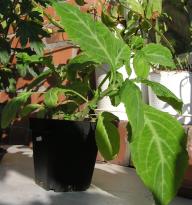
|
Spring 1 Fresh sprouts during spring on balcony. |
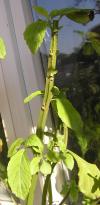
|
Spring 2 New sprouts on old branches. |
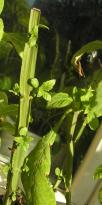
|
Spring 3 New sprouts on old branches. |
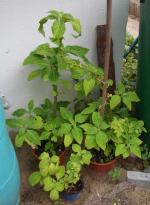
|
Outdoor in the garden Nice outdoorplants in a german garden Thanx to Seb for the image |
| Vegetative Growing |

|
| Here some pictures of Salvia divinorum cuttings and sprouting plants. |
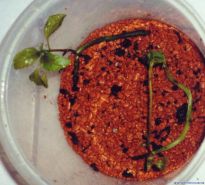
|
Stem Cuttings 1 Here some old stem parts which were not very healthy but nevertheless got roots on this wet "Seramis" and startet to bring new sprout. Better than throwing them away. |

|
Stem Cuttings 2 Some more recycling of old stems. Some may start to rot, but some should survive and will develop into new plant. |
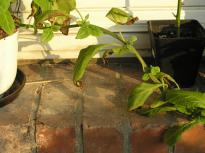
|
The natural way 2 Another example how Salvia divinorum could propagate in the wild nature by stems bending over and starting new sprouts. |
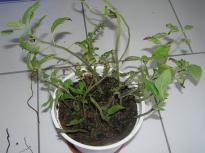
|
Duplication Part 2 Here the rest in the old pot, which should sprout again. |
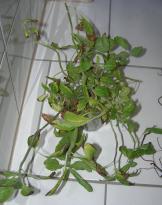
|
Duplication Part 3 Here the head cuttings, which were standing in a waterglass to get roots. Usually you should place them in several glasses because it can be tricky to separate the roots later. |
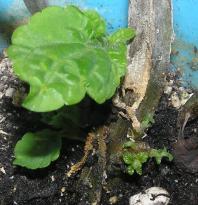
|
Kindergarden 1 A kindergarten at the base of an old stem. |
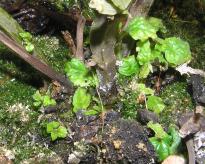
|
Kindergarden 2 Another kindergarten at the base of an old stem. |
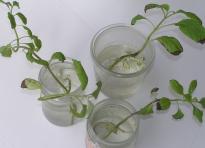
|
New roots 2 Some older roots, that get roots in their glases. |

|
Root sources At this stempies you can see some predefined roots. You find them most often at the lowest parts of bending stems because there is the highest chance for contact with the ground. |
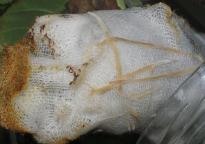
|
Jiffy Cuttings Methode - Image 3 The Jiffy pot with the bandage, through which the roots came out. |
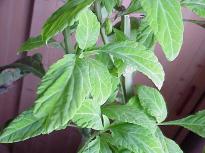
|
Cutting developing into a plant - Image 1 - by Crow Fat sidebranches at a mother plant |
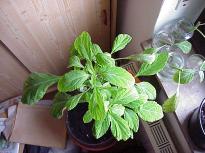
|
Cutting developing into a plant - Image 2 - by Crow Mother plant and cuttings in glasses |
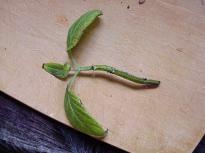
|
Cutting developing into a plant - Image 3 - by Crow Cutting |
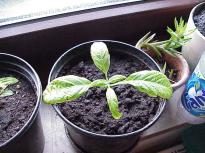
|
Cutting developing into a plant - Image 4 - by Crow Potted cutting |
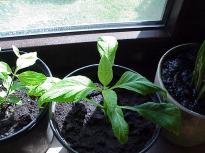
|
Cutting developing into a plant - Image 5 - by Crow The cutting grows ... |
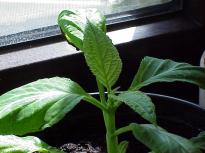
|
Cutting developing into a plant - Image 6 - by Crow ... became bigger ... |
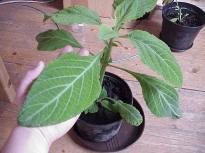
|
Cutting developing into a plant - Image 7 - by Crow ... and is finally a full sized perfect plant. |
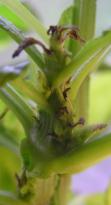
|
Growing tips This plant had some problems in the past and that why some burned tips. Nevertheless you can see a lot of young sprouts near the base of the leaves. These can develop into new branches. |
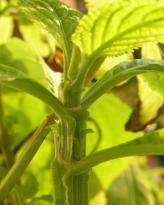
|
Nice Tip This plant is obviously healthy. Thats why she had this nice growing tip. You can also see the "ears" very well that are formed by the border short under the base of the leaves. |
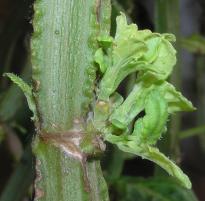
|
3 Branches Here you can see how there is growing a branch under a branch and a 3rd branch under these two. |
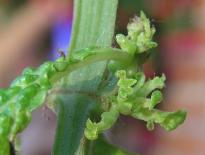
|
5 Branches A wild bunch of 5 small branches growing at the side of a stem. |
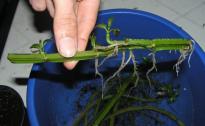
|
New roots on old stems 2 Here you can see healthy white roots. Its best to implant this one horizontal and let the side braches grow upwars. |
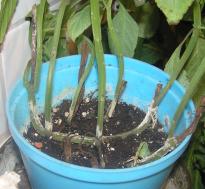
|
Horizontal Cutting Here you can see a horizontal stempieces. It's roots grew into the soil. As a result the old stempart is bend in U-form and there are 5 new branches growing out of it. |
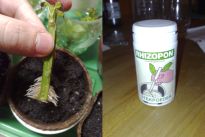
|
Cutting with Rhizopon Cutting got nice dense roots after using Rhizopon. Perfect state to put in soil. Image by Ferdinand M. |